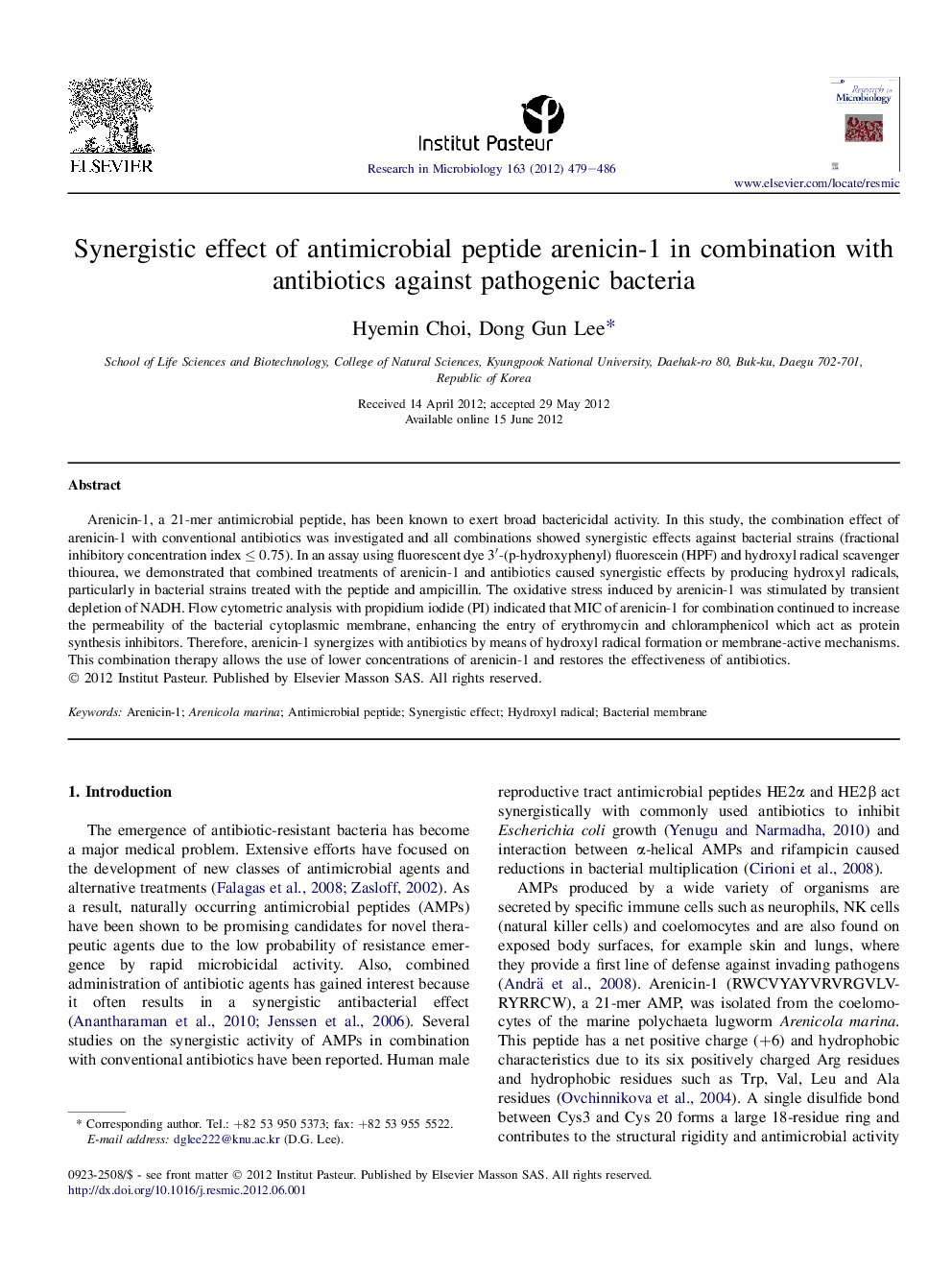| Article ID | Journal | Published Year | Pages | File Type |
|---|---|---|---|---|
| 4358646 | Research in Microbiology | 2012 | 8 Pages |
Arenicin-1, a 21-mer antimicrobial peptide, has been known to exert broad bactericidal activity. In this study, the combination effect of arenicin-1 with conventional antibiotics was investigated and all combinations showed synergistic effects against bacterial strains (fractional inhibitory concentration index ≤ 0.75). In an assay using fluorescent dye 3′-(p-hydroxyphenyl) fluorescein (HPF) and hydroxyl radical scavenger thiourea, we demonstrated that combined treatments of arenicin-1 and antibiotics caused synergistic effects by producing hydroxyl radicals, particularly in bacterial strains treated with the peptide and ampicillin. The oxidative stress induced by arenicin-1 was stimulated by transient depletion of NADH. Flow cytometric analysis with propidium iodide (PI) indicated that MIC of arenicin-1 for combination continued to increase the permeability of the bacterial cytoplasmic membrane, enhancing the entry of erythromycin and chloramphenicol which act as protein synthesis inhibitors. Therefore, arenicin-1 synergizes with antibiotics by means of hydroxyl radical formation or membrane-active mechanisms. This combination therapy allows the use of lower concentrations of arenicin-1 and restores the effectiveness of antibiotics.
